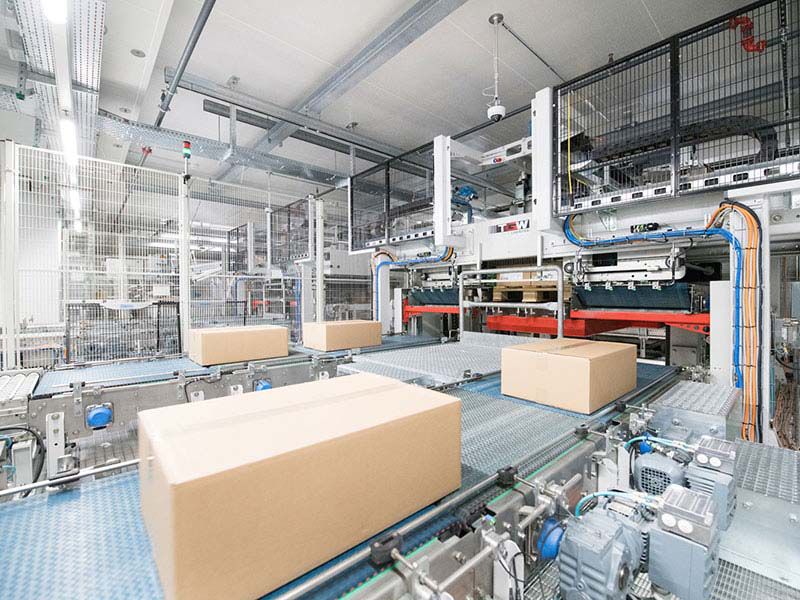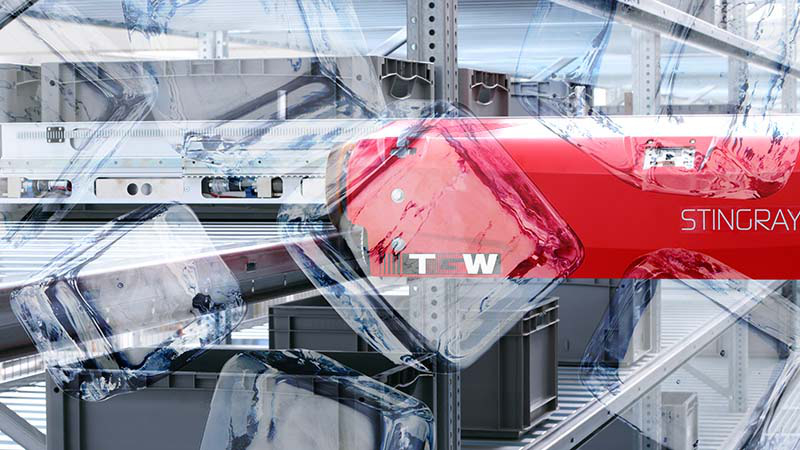- 劳动力短缺仍然是新项目立项的最重要因素
- 可持续性和数字化在决定要素中越来越重要
(Marchtrenk, 18 October 2021) During the Corona pandemic, the intralogistics specialist TGW has received an increasing number of requests for freezer warehouse automation. However, the growing popularity of frozen food and the home cooking trend are not the most important reasons that companies are setting automation projects in motion. The primary factor is a major labour shortage in the sector.
The consequences of the pandemic are causing more and more grocery retailers and logistics providers to consider automation of freezer warehouses, and to plan concrete projects. That has been the experience of the TGW Logistics Group over the past months. "The consumers' growing appetite for frozen vegetables or pizzas and the fact that more people than ever were cooking at home during the lockdown are trends that increase throughput. Yet the most important reason behind the automation projects is the worsening labour shortage in this logistics sector," points out Michael Schedlbauer, Industry Manager for the grocery sector at TGW. According to TGW, sustainability goals, rising energy costs and digitalisation are also at the top of the list of important arguments given by companies for their automation projects.
Refrigerated warehouses are currently well-stocked, both in the USA and in Europe. The Verband Deutscher Kühlhäuser und Kühllogistikunternehmen (VDKL), a German trade association of refrigerated warehouses and refrigerated logistics companies, reports for example that in 2020, its refrigerated warehouse members had an average total utilisation of 81.4 percent, making them 1.3 percent more full than they were as of 2019 (80.1 percent). Overall, they were more fully stocked than at any time in the last eighteen years.
Labour shortage as a driver of automation
The biggest challenge for the sector are the difficult working conditions at -25 degrees Celcius or below. Warehouse employees prefer jobs in non-refrigerated distribution centres even though in many countries they not only get regular breaks to warm up, but also legally regulated bonuses. "At this point there are some facilities in Western Europe that are almost entirely staffed with people from Ukraine or other Eastern European countries," Schedlbauer reports. Finding, training and retaining new employees costs the companies a lot of time and money. This makes the business case for a manually operated refrigerated warehouse weaker than the case for a non-refrigerated warehouse. "That is why investments in automation projects are more profitable in this logistics sector than in others," says retail expert Schedlbauer.

Saving up to two thirds of energy costs
Investments in automated systems are put into perspective when companies look at the total cost of ownership. An automated warehouse designed to be much more compact than a manually operated one can save up to two thirds of the energy costs. TGW's data also shows that productivity can be nearly doubled and process quality significantly increased.
High energy savings and emissions reductions can also be achieved when companies centralise multiple distribution centres. For example, TGW customer COOP in Switzerland consolidated three distribution centres into one single facility in Schafisheim. The result: the Swiss company's optimised supply chain reduces their carbon dioxide emissions by up to 10,000 tons per year. "Many companies have set themselves ambitious sustainability goals and therefore will not be able to get around automation. Logistics insourcing and centralisation will most likely also remain two important trends in the future," predicts Schedlbauer.
More demanding customer expectations are also spurring retailers and their contract logistics providers to automate and digitalise. More and more users want to know where the products come from and what the supply chain looks like. Innovative grocery producers and retailers therefore offer the possibility of tracking the entire supply chain digitally: for example, from boat to freezer in the case of fish. "The software solutions implemented in automated warehouses also help make full product traceability possible," adds Schedlbauer.
Long-term investments in automated warehouse structures
TGW expects even more companies and also investors to fund automated freezer warehouses in the future. An example of this is the TGW customer NewCold. "For one thing, capital costs are low at the moment. For another, even under pandemic conditions the fact remains that everybody has to eat and drink. Therefore, long-term investments in new, automated warehouse structures promise a solid return," concludes retail expert Schedlbauer.





